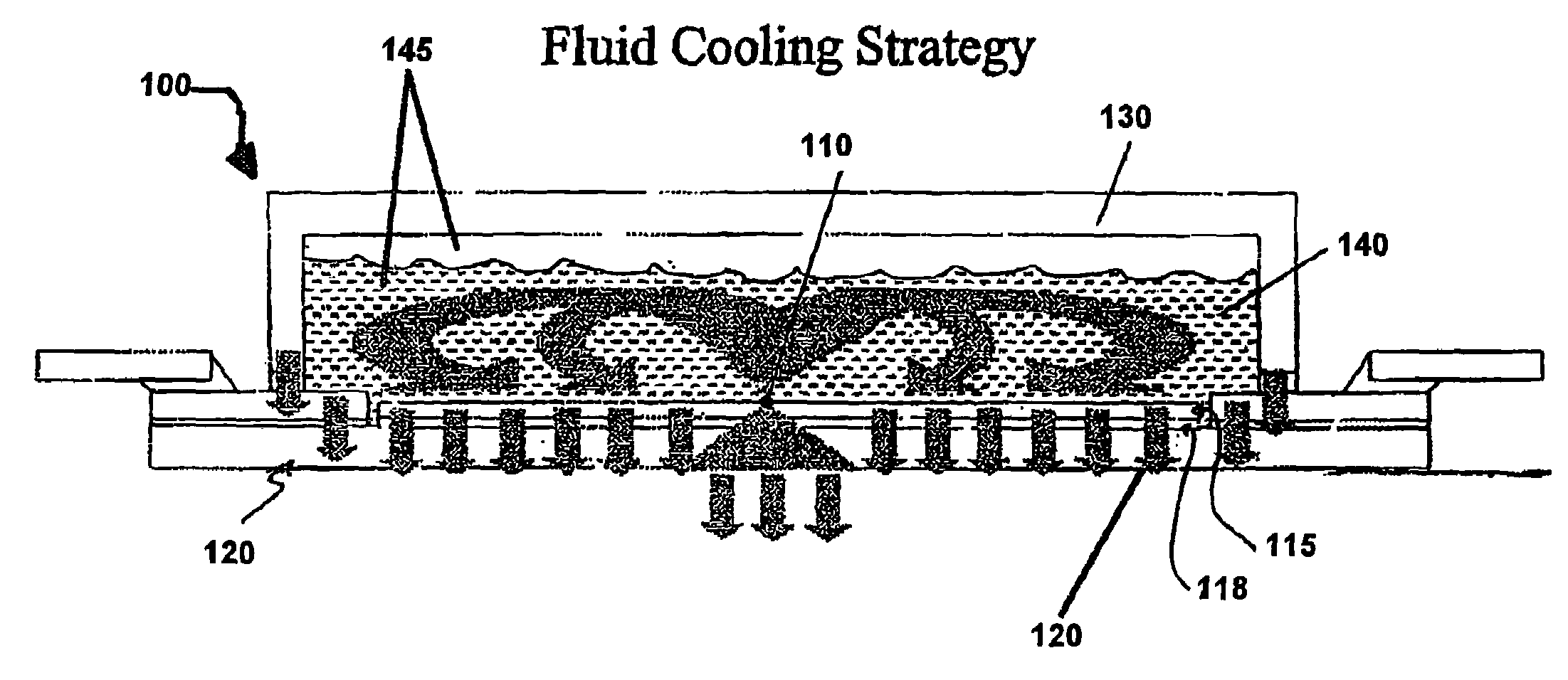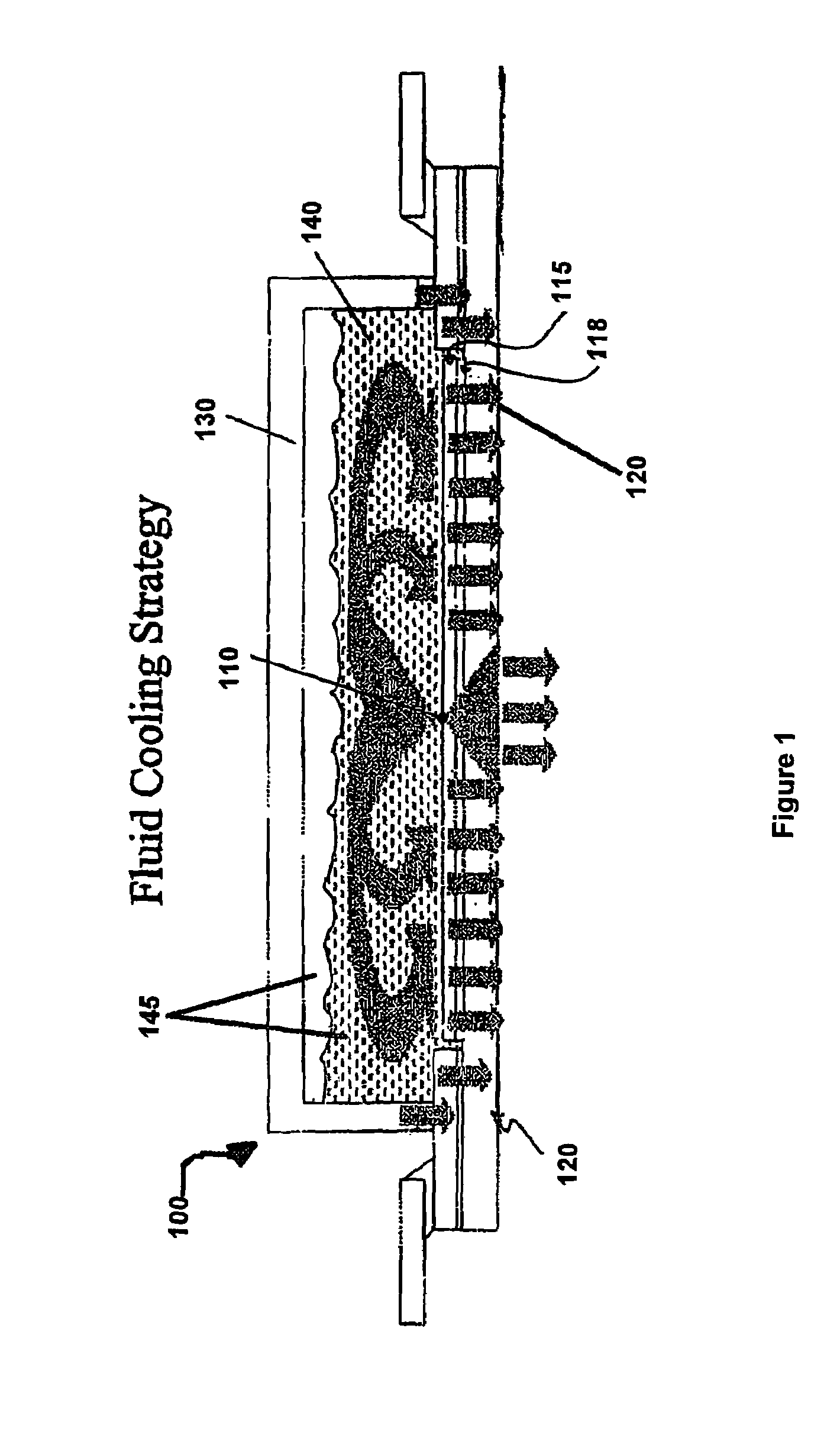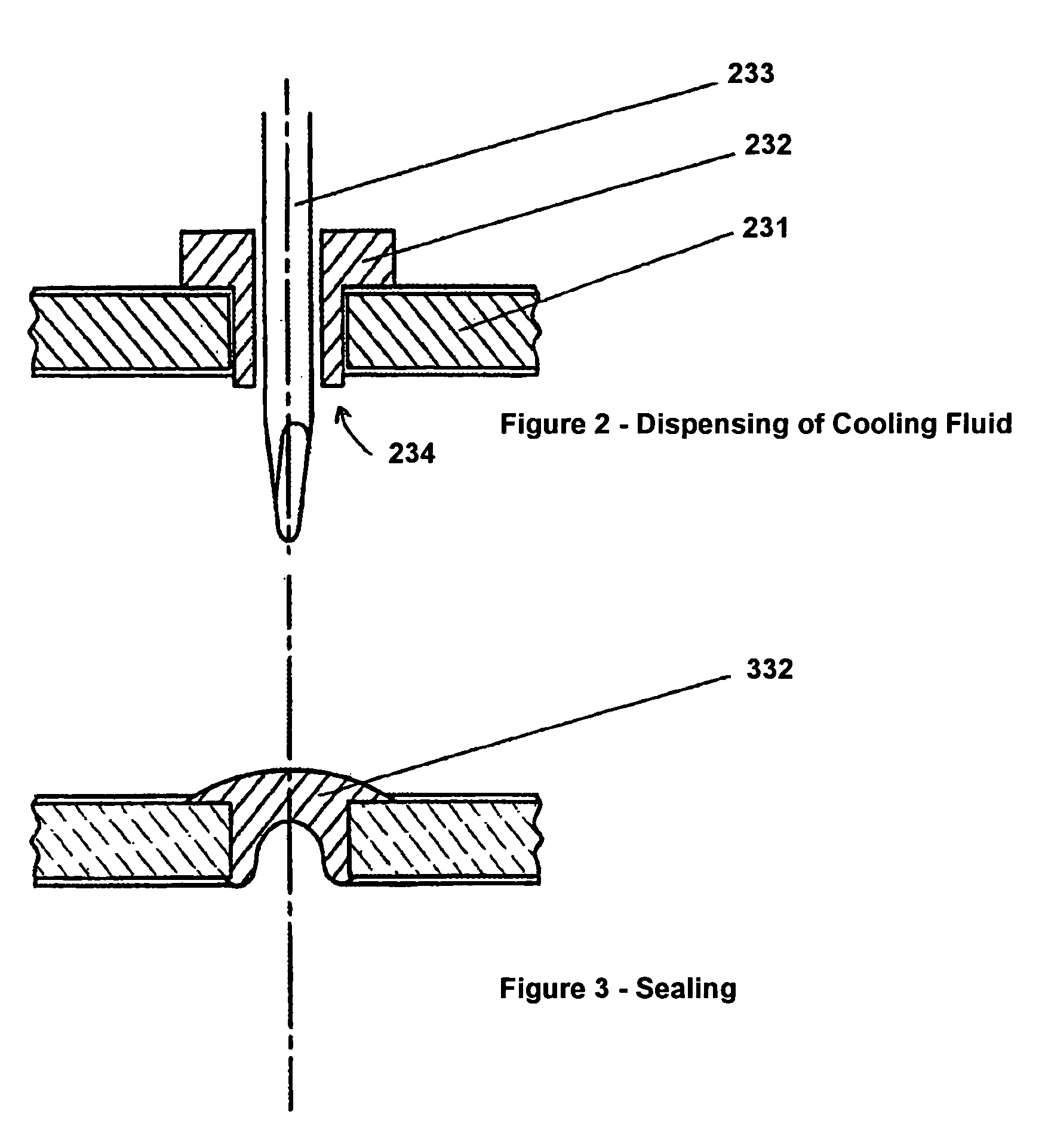Direct contact semiconductor cooling
a technology of direct contact and semiconductor, applied in the direction of individual semiconductor device testing, semiconductor/solid-state device testing/measurement, instruments, etc., can solve the problems of undetectable high thermal resistance in applications, reduce the thermal resistance through the semiconductor substrate, and degrade the performance of semiconductor devices, so as to facilitate direct thermal cooling, reduce the thermal spreading resistance, the effect of thermal spreading resistan
- Summary
- Abstract
- Description
- Claims
- Application Information
AI Technical Summary
Benefits of technology
Problems solved by technology
Method used
Image
Examples
Embodiment Construction
[0016]In accordance with one aspect of the present invention, a semiconductor package may be configured to facilitate the removal of heat from a heat generating source, such as small dissipating electronic feature geometries. In accordance with an exemplary embodiment of the present invention, removal of heat from a heat source is facilitated via conduction and convection through a fluid in contact with the heat source. In accordance with another embodiment of the present invention, use of direct contact fluid cooling systems may reduce thermal spreading resistance.
[0017]As described above, the removal of heat from the local area where it was generated may facilitate enhanced performance of a semiconductor chip. For example, if heat is not removed at sufficient rate, the local temperature may increase enough to cause the chip to fail or to be de-rated or to operate less efficiently. On the other hand, a semiconductor chip having an improved ability to remove heat from the local sour...
PUM
 Login to View More
Login to View More Abstract
Description
Claims
Application Information
 Login to View More
Login to View More - R&D
- Intellectual Property
- Life Sciences
- Materials
- Tech Scout
- Unparalleled Data Quality
- Higher Quality Content
- 60% Fewer Hallucinations
Browse by: Latest US Patents, China's latest patents, Technical Efficacy Thesaurus, Application Domain, Technology Topic, Popular Technical Reports.
© 2025 PatSnap. All rights reserved.Legal|Privacy policy|Modern Slavery Act Transparency Statement|Sitemap|About US| Contact US: help@patsnap.com



